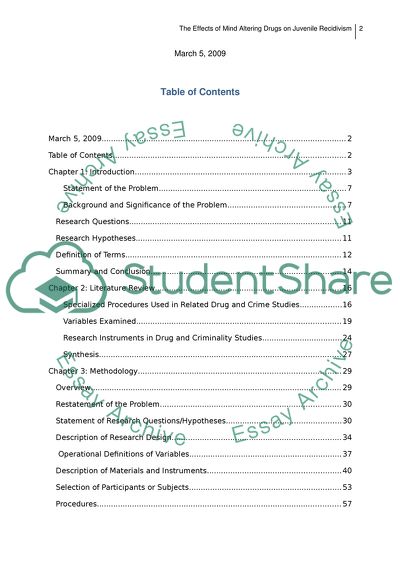The Effects of Mind-Altering Drugs on Juvenile Recidivism Research Paper. Retrieved from https://studentshare.org/psychology/1549268-essays
The Effects of Mind-Altering Drugs on Juvenile Recidivism Research Paper. https://studentshare.org/psychology/1549268-essays.


